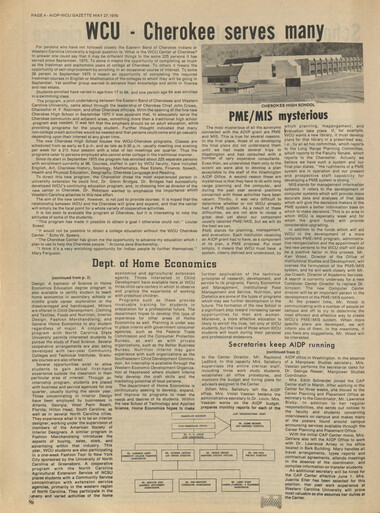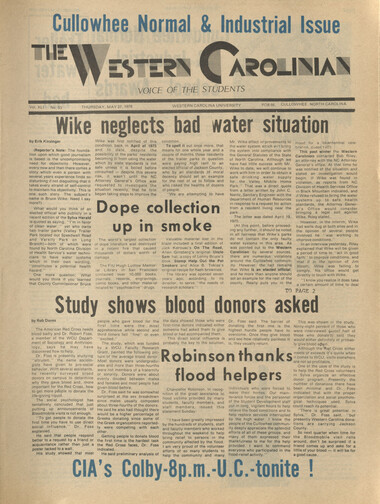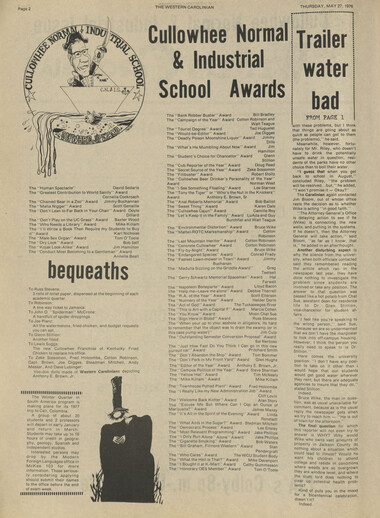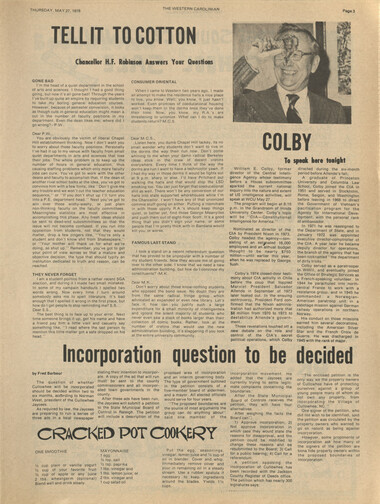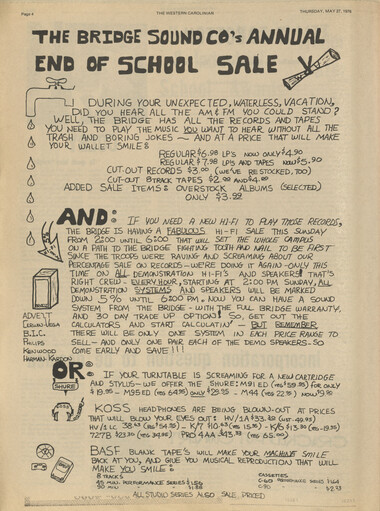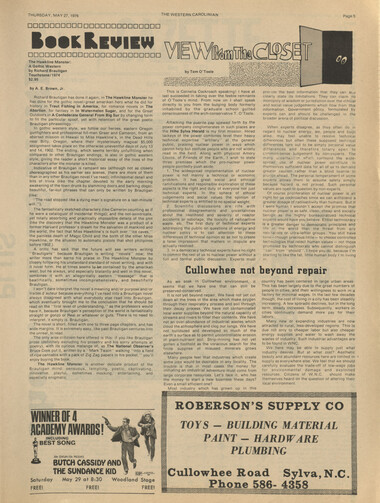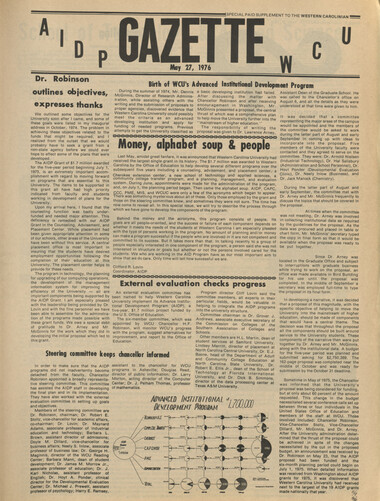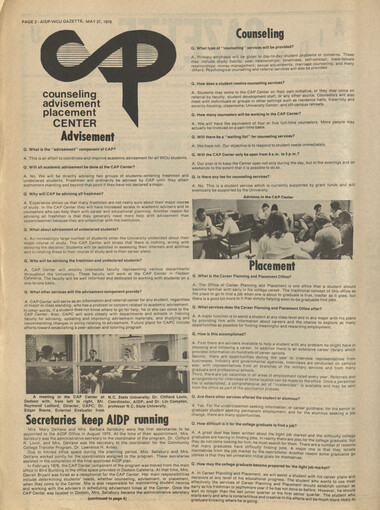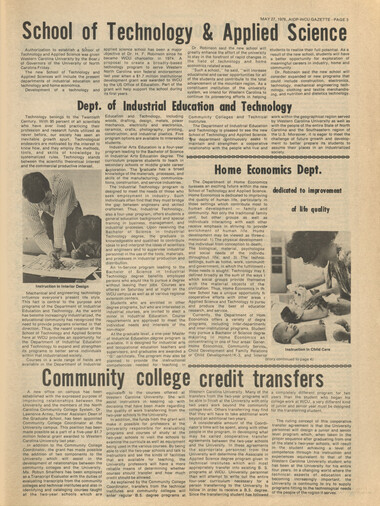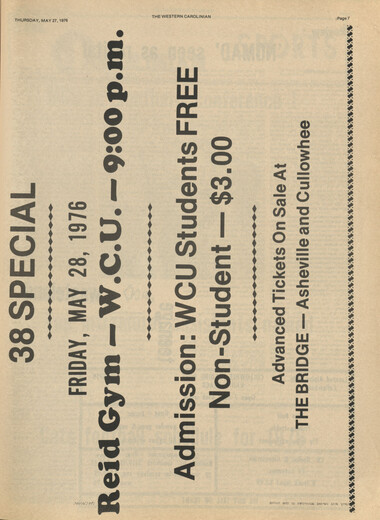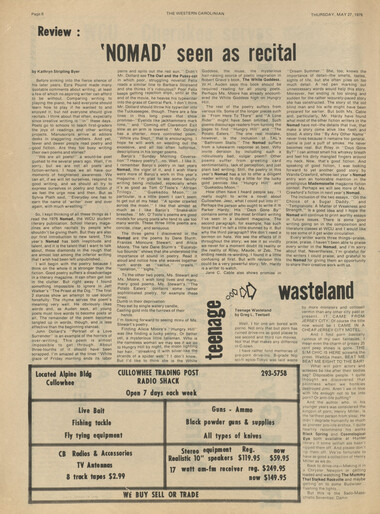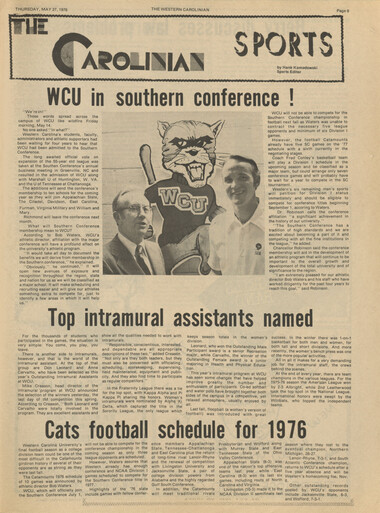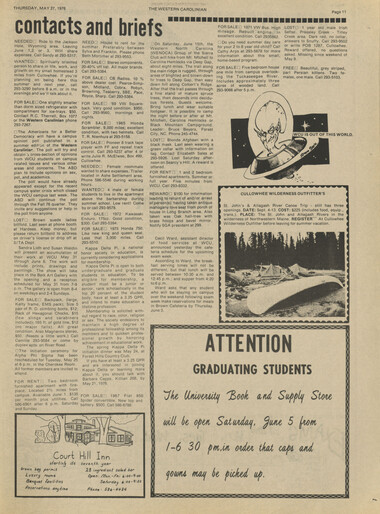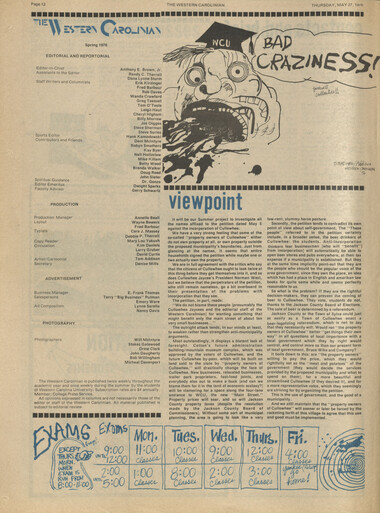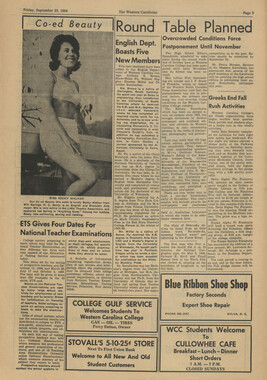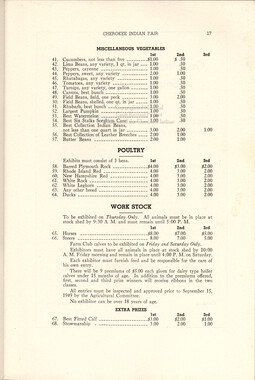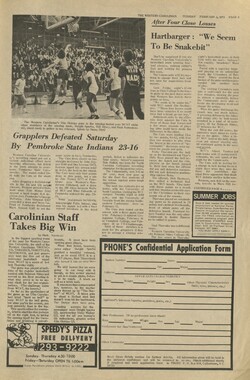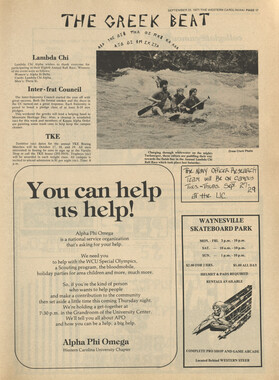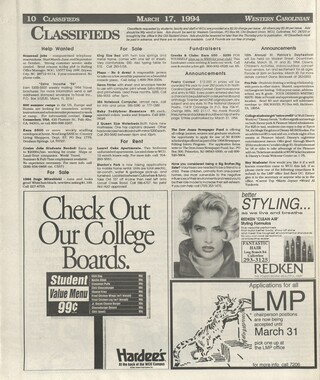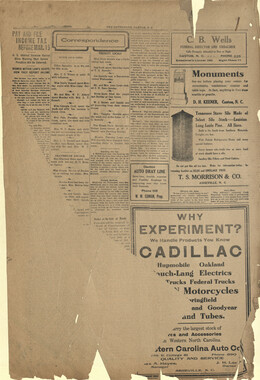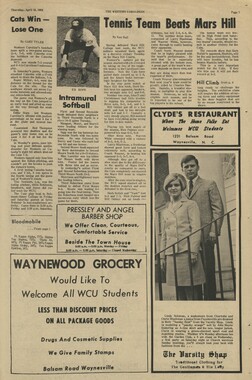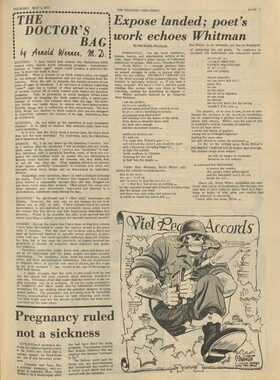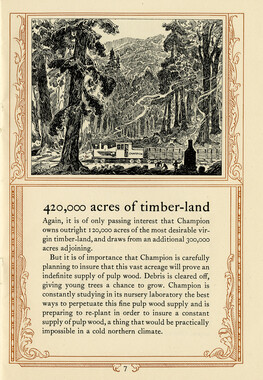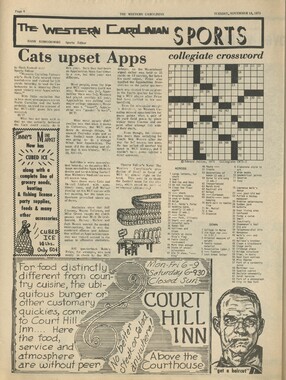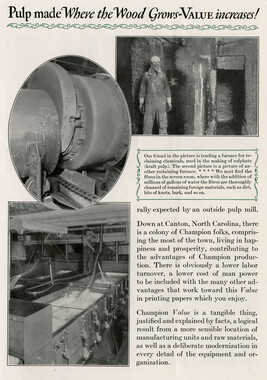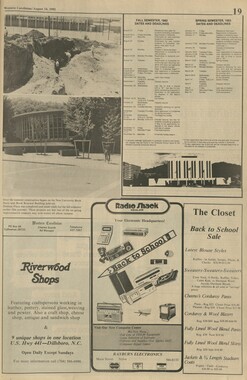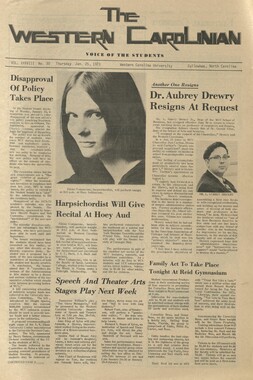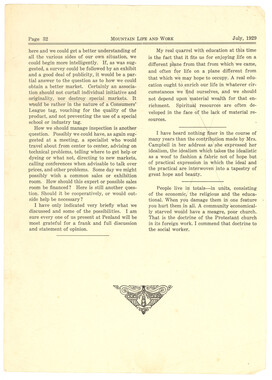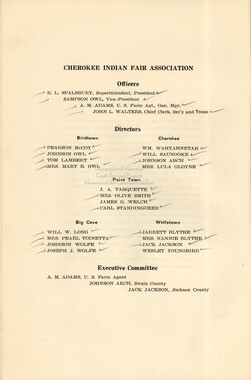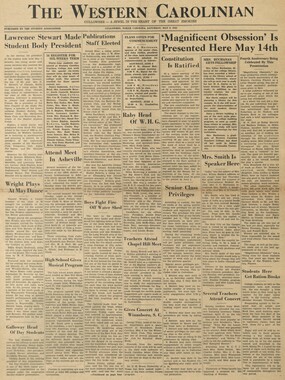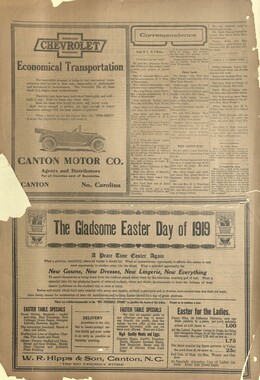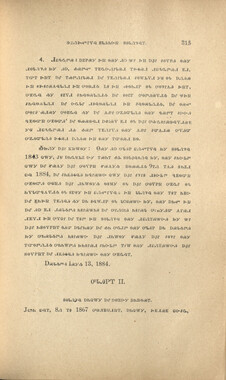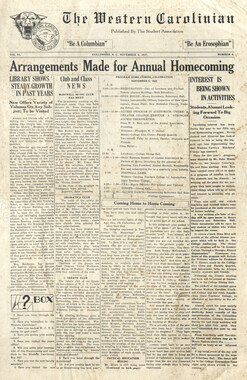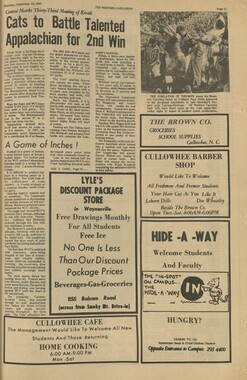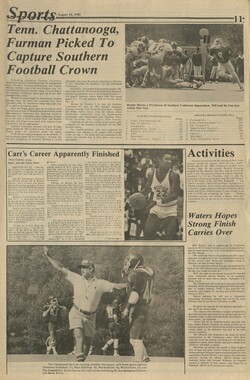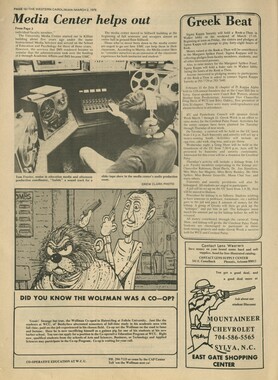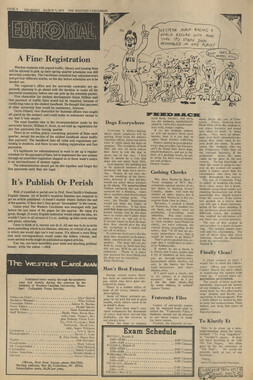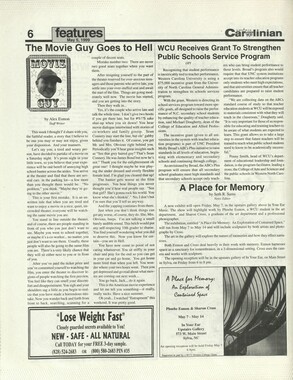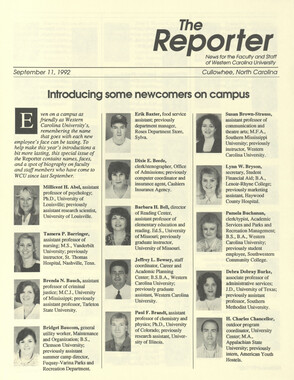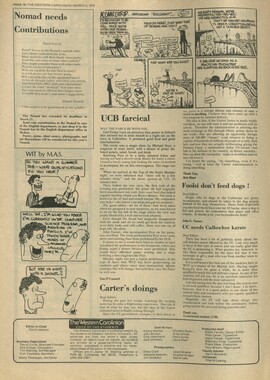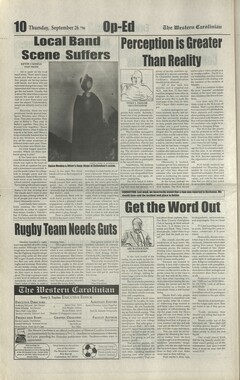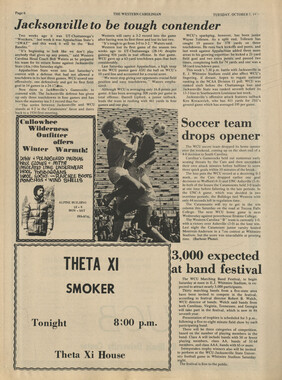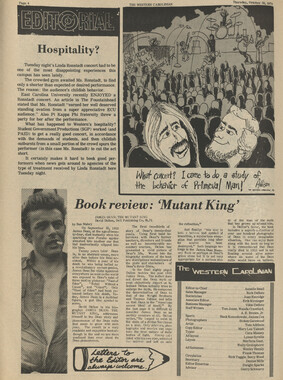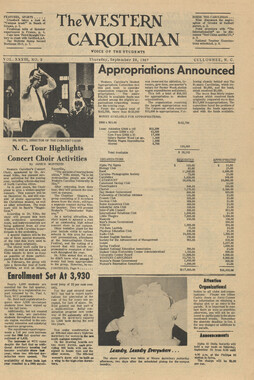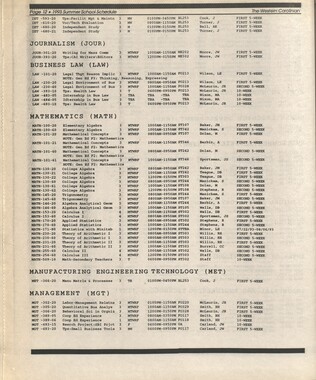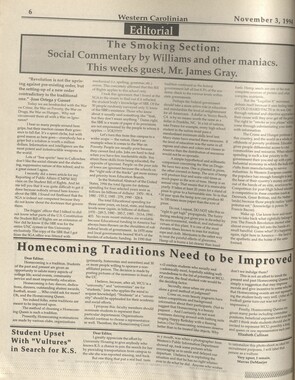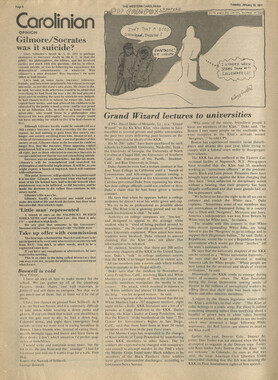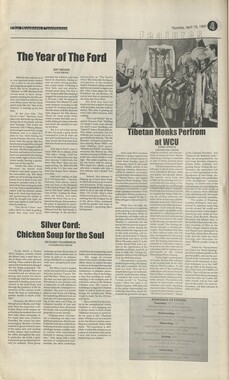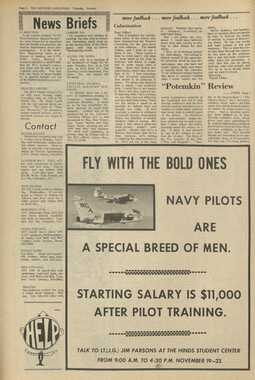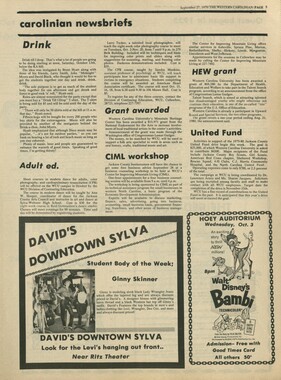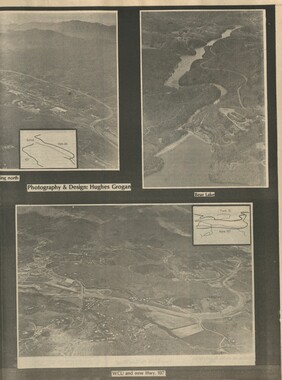Western Carolina University (20)
View all
- Canton Champion Fibre Company (2308)
- Cherokee Traditions (293)
- Civil War in Southern Appalachia (165)
- Craft Revival (1942)
- Great Smoky Mountains - A Park for America (2767)
- Highlights from Western Carolina University (430)
- Horace Kephart (941)
- Journeys Through Jackson (154)
- LGBTQIA+ Archive of Jackson County (26)
- Oral Histories of Western North Carolina (314)
- Picturing Appalachia (6772)
- Stories of Mountain Folk (413)
- Travel Western North Carolina (160)
- Western Carolina University Fine Art Museum Vitreograph Collection (129)
- Western Carolina University Herbarium (92)
- Western Carolina University: Making Memories (708)
- Western Carolina University Publications (2283)
- Western Carolina University Restricted Electronic Theses and Dissertations (146)
- Western North Carolina Regional Maps (71)
- World War II in Southern Appalachia (131)
University of North Carolina Asheville (6)
View all
- Allanstand Cottage Industries (62)
- Appalachian National Park Association (53)
- Bennett, Kelly, 1890-1974 (1388)
- Berry, Walter (76)
- Brasstown Carvers (40)
- Carver, George Washington, 1864?-1943 (26)
- Cathey, Joseph, 1803-1874 (1)
- Champion Fibre Company (233)
- Champion Paper and Fibre Company (297)
- Cherokee Indian Fair Association (16)
- Cherokee Language Program (22)
- Crowe, Amanda (40)
- Edmonston, Thomas Benton, 1842-1907 (7)
- Ensley, A. L. (Abraham Lincoln), 1865-1948 (275)
- Fromer, Irving Rhodes, 1913-1994 (70)
- George Butz (BFS 1907) (46)
- Goodrich, Frances Louisa (120)
- Grant, George Alexander, 1891-1964 (96)
- Heard, Marian Gladys (60)
- Kephart, Calvin, 1883-1969 (15)
- Kephart, Horace, 1862-1931 (313)
- Kephart, Laura, 1862-1954 (39)
- Laney, Gideon Thomas, 1889-1976 (439)
- Masa, George, 1881-1933 (61)
- McElhinney, William Julian, 1896-1953 (44)
- Niggli, Josephina, 1910-1983 (10)
- North Carolina Park Commission (105)
- Osborne, Kezia Stradley (9)
- Owens, Samuel Robert, 1918-1995 (11)
- Penland Weavers and Potters (36)
- Roberts, Vivienne (15)
- Roth, Albert, 1890-1974 (142)
- Schenck, Carl Alwin, 1868-1955 (1)
- Sherrill's Photography Studio (2565)
- Southern Highland Handicraft Guild (127)
- Southern Highlanders, Inc. (71)
- Stalcup, Jesse Bryson (46)
- Stearns, I. K. (213)
- Thompson, James Edward, 1880-1976 (226)
- United States. Indian Arts and Crafts Board (130)
- USFS (683)
- Vance, Zebulon Baird, 1830-1894 (1)
- Weaver, Zebulon, 1872-1948 (58)
- Western Carolina College (230)
- Western Carolina Teachers College (282)
- Western Carolina University (1794)
- Western Carolina University. Mountain Heritage Center (18)
- Whitman, Walt, 1819-1892 (10)
- Wilburn, Hiram Coleman, 1880-1967 (73)
- Williams, Isadora (3)
- Cain, Doreyl Ammons (0)
- Crittenden, Lorraine (0)
- Rhodes, Judy (0)
- Smith, Edward Clark (0)
- Appalachian Region, Southern (2399)
- Asheville (N.C.) (1917)
- Avery County (N.C.) (26)
- Blount County (Tenn.) (161)
- Buncombe County (N.C.) (1671)
- Cherokee County (N.C.) (283)
- Clay County (N.C.) (555)
- Graham County (N.C.) (233)
- Great Smoky Mountains National Park (N.C. and Tenn.) (510)
- Haywood County (N.C.) (3522)
- Henderson County (N.C.) (70)
- Jackson County (N.C.) (4692)
- Knox County (Tenn.) (25)
- Knoxville (Tenn.) (12)
- Lake Santeetlah (N.C.) (10)
- Macon County (N.C.) (420)
- Madison County (N.C.) (211)
- McDowell County (N.C.) (39)
- Mitchell County (N.C.) (132)
- Polk County (N.C.) (35)
- Qualla Boundary (981)
- Rutherford County (N.C.) (76)
- Swain County (N.C.) (2113)
- Transylvania County (N.C.) (247)
- Watauga County (N.C.) (12)
- Waynesville (N.C.) (73)
- Yancey County (N.C.) (72)
- Aerial Photographs (3)
- Aerial Views (60)
- Albums (books) (4)
- Articles (1)
- Artifacts (object Genre) (228)
- Bibliographies (1)
- Biography (general Genre) (2)
- Cards (information Artifacts) (38)
- Clippings (information Artifacts) (191)
- Crafts (art Genres) (622)
- Depictions (visual Works) (21)
- Design Drawings (1)
- Drawings (visual Works) (184)
- Envelopes (73)
- Facsimiles (reproductions) (1)
- Fiction (general Genre) (4)
- Financial Records (12)
- Fliers (printed Matter) (67)
- Glass Plate Negatives (381)
- Guidebooks (2)
- Internegatives (10)
- Interviews (812)
- Land Surveys (102)
- Letters (correspondence) (1013)
- Manuscripts (documents) (619)
- Maps (documents) (177)
- Memorandums (25)
- Minutes (administrative Records) (59)
- Negatives (photographs) (5835)
- Newsletters (1285)
- Newspapers (2)
- Occupation Currency (1)
- Paintings (visual Works) (1)
- Pen And Ink Drawings (1)
- Periodicals (193)
- Personal Narratives (10)
- Photographs (12976)
- Plans (maps) (1)
- Poetry (7)
- Portraits (1960)
- Postcards (329)
- Programs (documents) (151)
- Publications (documents) (2237)
- Questionnaires (65)
- Scrapbooks (282)
- Sheet Music (2)
- Slides (photographs) (402)
- Songs (musical Compositions) (2)
- Sound Recordings (796)
- Specimens (92)
- Speeches (documents) (15)
- Tintypes (photographs) (8)
- Transcripts (322)
- Video Recordings (physical Artifacts) (23)
- Vitreographs (129)
- Text Messages (0)
- A.L. Ensley Collection (275)
- Appalachian Industrial School Records (7)
- Appalachian National Park Association Records (336)
- Axley-Meroney Collection (2)
- Bayard Wootten Photograph Collection (20)
- Bethel Rural Community Organization Collection (7)
- Blumer Collection (5)
- C.W. Slagle Collection (20)
- Canton Area Historical Museum (2110)
- Carlos C. Campbell Collection (282)
- Cataloochee History Project (65)
- Cherokee Studies Collection (4)
- Daisy Dame Photograph Album (5)
- Daniel Boone VI Collection (1)
- Doris Ulmann Photograph Collection (112)
- Elizabeth H. Lasley Collection (1)
- Elizabeth Woolworth Szold Fleharty Collection (4)
- Frank Fry Collection (95)
- George Masa Collection (173)
- Gideon Laney Collection (452)
- Hazel Scarborough Collection (2)
- Hiram C. Wilburn Papers (28)
- Historic Photographs Collection (236)
- Horace Kephart Collection (861)
- Humbard Collection (33)
- Hunter and Weaver Families Collection (1)
- I. D. Blumenthal Collection (4)
- Isadora Williams Collection (4)
- Jesse Bryson Stalcup Collection (47)
- Jim Thompson Collection (224)
- John B. Battle Collection (7)
- John C. Campbell Folk School Records (80)
- John Parris Collection (6)
- Judaculla Rock project (2)
- Kelly Bennett Collection (1407)
- Love Family Papers (11)
- Major Wiley Parris Civil War Letters (3)
- Map Collection (12)
- McFee-Misemer Civil War Letters (34)
- Mountain Heritage Center Collection (4)
- Norburn - Robertson - Thomson Families Collection (44)
- Pauline Hood Collection (7)
- Pre-Guild Collection (2)
- Qualla Arts and Crafts Mutual Collection (12)
- R.A. Romanes Collection (681)
- Rosser H. Taylor Collection (1)
- Samuel Robert Owens Collection (94)
- Sara Madison Collection (144)
- Sherrill Studio Photo Collection (2558)
- Smoky Mountains Hiking Club Collection (616)
- Stories of Mountain Folk - Radio Programs (374)
- The Reporter, Western Carolina University (510)
- Venoy and Elizabeth Reed Collection (16)
- WCU Gender and Sexuality Oral History Project (32)
- WCU Mountain Heritage Center Oral Histories (25)
- WCU Oral History Collection - Mountain People, Mountain Lives (71)
- WCU Students Newspapers Collection (1744)
- Western North Carolina Tomorrow Black Oral History Project (69)
- William Williams Stringfield Collection (2)
- Zebulon Weaver Collection (109)
- African Americans (390)
- Appalachian Trail (35)
- Artisans (521)
- Cherokee art (84)
- Cherokee artists -- North Carolina (10)
- Cherokee language (21)
- Cherokee pottery (101)
- Cherokee women (208)
- Church buildings (167)
- Civilian Conservation Corps (U.S.) (110)
- College student newspapers and periodicals (1830)
- Dams (103)
- Dance (1023)
- Education (222)
- Floods (61)
- Folk music (1015)
- Forced removal, 1813-1903 (2)
- Forest conservation (220)
- Forests and forestry (921)
- Gender nonconformity (4)
- Great Smoky Mountains National Park (N.C. and Tenn.) (181)
- Hunting (38)
- Landscape photography (10)
- Logging (103)
- Maps (84)
- Mines and mineral resources (8)
- North Carolina -- Maps (18)
- Paper industry (38)
- Postcards (255)
- Pottery (135)
- Railroad trains (71)
- Rural electrification -- North Carolina, Western (3)
- School integration -- Southern States (2)
- Segregation -- North Carolina, Western (5)
- Slavery (5)
- Sports (452)
- Storytelling (245)
- Waterfalls -- Great Smoky Mountains (N.C. and Tenn.) (66)
- Weaving -- Appalachian Region, Southern (280)
- Wood-carving -- Appalachian Region, Southern (328)
- World War, 1939-1945 (173)
Western Carolinian Volume 41 Number 53
Item
Item’s are ‘child’ level descriptions to ‘parent’ objects, (e.g. one page of a whole book).
-
-
PAGE 4 - AIDP-WCU GAZETTE MAY 27,1976 WCU - Cherokee serves many For persons who have not followed closely the Eastern Band of Cherokee Indians or Western Carolina University a logical question is: What is the WCU Center at Cherokee? In answer one could say that it may be different things to the some 225 persons it has served since September, 1975. To some it means the opportunity of completing as much as the freshman and sophomore years of college at Cherokee. To others it means the opportunity of self-improvement by enrolling in an occasional course of interest. To some 28 person in September 1975 it meant an opportunity of completing the required freshman courses in English or Mathematics of the colleges to which they will be going in September. Yet another group wanted to advance their knowledge and skills in finance and real estate. Students enrolled have varied in age from 17 to 68, and one person age 64 was enrolled in a swimming class. The program, a joint undertaking between the Eastern Band of Cherokees and Western Carolina University, came about through the leadership of Cherokee Chief John Crowe, Chancellor H. F. Robinson, and other Cherokee officials. With the opening of the fine new Cherokee High School in September 1975 it was apparent that, to adequately serve the Cherokee community and adjacent areas, something more than a traditional high school program was needed. It was felt that the emphasis should be on adult education, while providing programs for the young student. Further thought indicated that many non-college credit activities would be needed and that persons could come and go casually depending upon their interest at any given time. The new Cherokee High School houses the WCU-Cherokee programs. Classes are scheduled from as early as 5 p.m. and as late as 6:30 p.m. usually meeting one evening per week for a 2Vi hour session with a total of ten meetings per quarter. Thus the programs cater to persons employed who cannot enter college in the traditional mam jam CHEROKEE HIGH SCHOOL r : HIGH SCI PME/MIS mysterious The most mysterious of all the acronyms .whicn planning, magangement, and connected with the ADIP grant are PME ^valuation take place. If, for example, and MIS. This is true for several reasons. WCU wants a new library, it must develop In the first place, those of us developing P|ans for that library in a prescribed way, the final plans did not understand them i.e., by an ad hoc committee, which reports until we had made several trips to t0 tne Lon9 Ran9e Planning Committee, Washington and had consulted with a wnicn reports to the Faculty Senate, which Since its start in September 1975 the program has enrolled about 225 separate persons "umber of v.ery expensive consultants, reports to the Chancellor. Actually i Even then, we understood them only to the believe we have such a system and our extent we were able to develop a plan final plan states, "the rudiments of a PME with enrollment currently at 96. Courses, staffed in part by WCU faculty, have included English, Art, Cherokee History, Sociology, Mathematics, Real Estate, Finance, Speech, Health and Physical Education, Geography, Cherokee Language and Reading. To direct this new program, the Chancellor chose the most experienced person in university extension he could find, Dr. Glenn Bridges. Dr. Bridges had successfully developed WCU's continuing education program, and, in choosing him as director of the new center in Cherokee, Dr. Robinson wanted to emphasize the importance which Western Carolina attaches to this new effort. The aim of the new center, however, is not just to provide courses. It is hoped that the vacant. Thirdly, relationship between WCU and the Cherokee will grow and expand, and that the center determine whether or will simply be the focal point for a whole variety of cooperative activities. It is too soon to evaluate the program at Cherokee, but it is interesting to note the attitudes of some of the students: "This program has made it possible to obtain a goal I otherwise could not." Louise Sneed. college education without the WCU Cherokee acceptable to the staff of the Washington system are in operation and our present AIDP Office. A second reason these are and prospective staff capability for mysterious is that they have to do with long developing a PME system is strong." range planning and the computer, and MIS stands for management information during the past year several positions systems. It refers to the development of concerned with these activities have been computer systems which will provide more very difficult to accurate data and analyses of that data "It would not be possible to obtain Center." Echo W. Speers. "The Cherokee Center has given me the opportunity to advance my education which I plan to use to help the Cherokee people.'' Arizona Jane Blankenship. "I think it's a very enriching opportunity for Indian people to further themselves." Mary Ferguson. WCU already which will give the decisions makers ir d a PME system. As a result of these PME system a better information base on difficulties, we are not able to reveal a which to make decisions. This is an area in great deal yet about our component which WCU is especially weak and for usually labelled PME/MIS, but we will do wnich the grant funds will provide the best we can. considerable upgrading. PME stands for planning, management, In addition to the funds which will aid and evaluation. Each institution receiving wcu in tne development of a more an AIDP grant had to have, as a component complete PME/MIS program, administra- of its plan, a PME proposal. Put most simply, it means that WCU must have a system, clearly defined and understood, by Dept. of Home Economics economics and agricultural extension [continued from p. 3] agents. Those interested in Child Design. A bachelor of Science in Home Development have available here at WCU Economics Education degree program is three child care centers in which to observe also available to certify student to teach and Practice the experience of working home economics in secondary schools or with preschool children, middle grade career exploration or the Programs such as these provide disadvantaged and handicapped. Minors invaluable training for students in are offered in Child Development, Clothing preparation for a professional future. The and Textiles, Foods and Nutrition, Interior department hopes to develop this type of Design, Fashion Merchandising, and experience for other areas of Home General Home Economics to any student Economics as well. Planning is under way regardless of major. A cooperative to place interns with government consumer program with North Carolina State agencies, such as the Federal Trade of the University permits interested students to Commission and the Consumer Protection pursue the study of Food Science. Several Bureau, as well cooperative arrangements are also being organizations, such as the Better Business developed with two-year Community Bureau. Nutrition interns may gain Colleges and Technical Institutes. Gradu- experience with such organizations as the ate courses are also offered. Southwestern Child Development Commis- Several opportunities exist to allow sion. An internship is lilable through the 3 make students to gain actual first-hand Western Economic Development Organiza- experience outside the classroom in their t'°n at Hazelwood where student interns particular area of interest. Through an ne|P develop the craft skills and the internship program, students are placed marketing potential of local persons, with business and service agencies for one The department of Home Economics is quarter usually during the senior year, continuously seeking to develop, expand, Those concentrating in Interior Design and improve its programs to meet the have been employed by businesses in needs and desires of its students. Within Atlanta, Georgia; West Palm Beach, *he new School of Technology and Applied Florida; Hilton Head, South Carolina; as Science, Home Economics hopes ' well as in several North Carolina cities. They experience what it is to be an interior designer, working under the supervision of members of the American Society of Interior Designers. A similar program in Fashion Merchandising introduces the aspects of buying, sales, stock, and advertising within that industry. This year, WCU students are also participating in a one-week Fashion Tour to New York City sponsored by the University of North Carolina at Greensboro. A cooperative program with the North Carolina Agricultural Extension Service of NCSU places students with a Community Service concentration with extension service agencies, primarily in the western region of North Carolina. They participate in the .vnany and varied activities of the home ive reorganization and the appointment of i new persons to the WCU staff will also a positive factor in this process. Mr. Ken Wood, Director of the Office of Institutional Studies and Development, will oversee the formulation of the PME/MIS system, and he will work closely with Mr. Joe Creech, Director of Academic Services, principles of research, development, and A search is currently underway for a new service to its programs. Family Economics Computer Center Director to replace Dr. and Management, Instittutional Food Simpson. The new Computer Center Management and Service, Nutrition, and director will bean important person in the Dietetics are some of the types of programs development of the PME/MIS system, which may see further development in the At the present time, Mr. Wood is future. The formation of the new School is communicating with a number of people on a significant step toward increasing career campus and off to try to determine the opportunities for men and women, most efficient and effective way to create Moreover, a more effective education is WCU's PME/MIS system. When more likely to enrich the lives, not only of WCU specific plans are developed, we will students, but the lives of those whom WCU inform you of them. In the meantime, if students will touch during their personal you have any suggestions, Mr. Wood will and professional endeavors. be interested. Secretaries keep AIDP running [continued from 2] to the Center Director, Mr. Raymond AIDP office in Washington. In the absence Ledford. In this capacity Mrs. Salisbury of a Manpower Studies secretary, Mrs. supervises the entire clerical staff, Vassian performs the secretarial tasks for including three work study students, Dr. George Reeser, Manpower Studies establishes all office procedures, and Coordinator. monitors the budget and hiring plans for Mrs: Edith Schneider joined the CAP advisers assigned to the Center. Center staff in March. After working in the When Mrs. Salisbury left the AIDP Center for three weeks, she moved to the office, Mrs. Violet Vassian became the Career Planning and Placement Office as administrative secretary to Dr. Lovin. Mrs. secretary to the Coordinator, Mr. Lawrence Vassian works on the AIDP budget, prepares monthly reports for each of the P^ bixby. In addition to her regular responsibilities, she sends out notices to the faculty and students concerning interviewers on campus and makes many of the posters found around campus announcing services available through the Career Planning and Placement Office. With the initial CAP Center move, Mrs. DeVane also left the AIDP Office to work with Dr. Lawrence Arney in his office located in Belk Building. Mary handles all travel arrangements, types reports and contractual agreements, attends meetings in the absence of the coordinator, and compiles information on transfer students. An additional secretary will be hired for the CAP Center effective June 1. Mrs. Juanita Eller has been selected for this position. Her past work experience at Western Carolina University will prove most valuable as she assumes her duties at the Center.
Object
Object’s are ‘parent’ level descriptions to ‘children’ items, (e.g. a book with pages).
-
The Western Carolinian is Western Carolina University's student-run newspaper. The paper was published as the Cullowhee Yodel from 1924 to 1931 before changing its name to The Western Carolinian in 1933.
-
